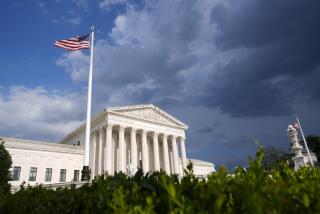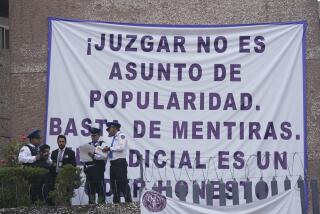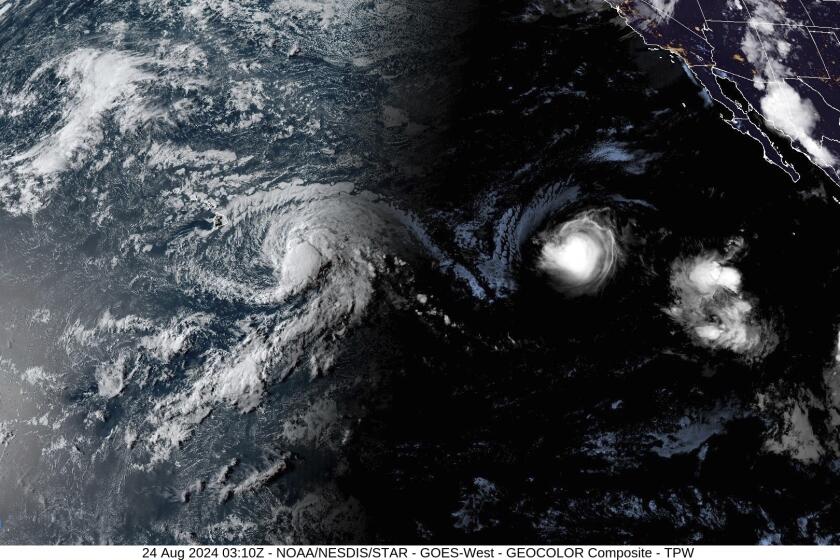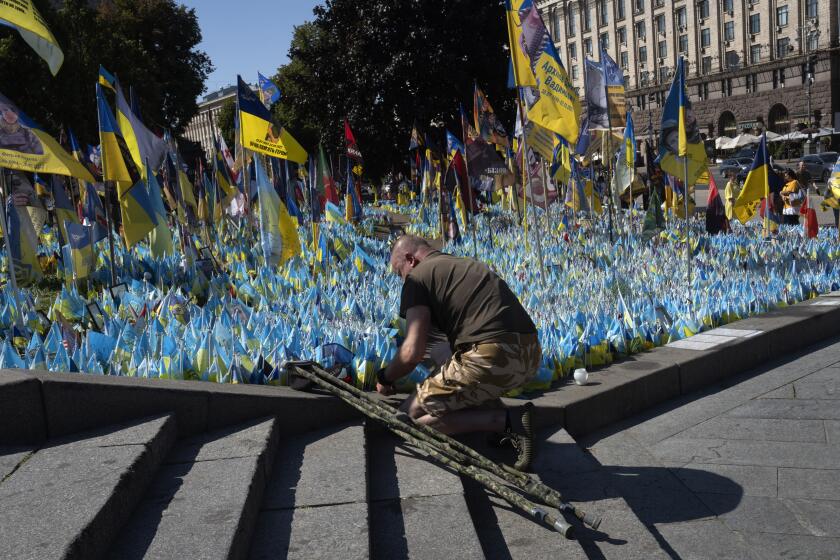Grand Canyon Flight Curbs Criticized
As the federal government lauded new steps to curb aircraft noise over the Grand Canyon, environmentalists Tuesday said the restrictions fail to go far enough and aren’t likely to restore the area’s “natural quiet.”
“It’s a first step, but we’re hesitant to say it’s one in the right direction,” said Eric Howard of the Grand Canyon Trust, a conservation group based in Flagstaff. Until the actual number of flights is capped, the new rules won’t have much of an impact, he said.
Air tour officials, meanwhile, began preparing a lawsuit to block the new regulations. At a news conference in Washington, they said they will argue that the new curbs exceed the intent of Congress to protect visitors from aircraft noise.
“The government is going beyond an attempt to protect visitors,” said Don Elliott, an attorney for the U.S. Air Tour Assn. He said the new route restrictions “mandate quiet for quiet’s sake in areas of the park where there are no people.”
Under the actions outlined Tuesday by Interior Secretary Bruce Babbitt, no-fly zones would be broadened throughout the Grand Canyon, one of the country’s premier tourist attractions and natural wonders. Also, early morning and evening curfews would be imposed on air tours to help reduce noise for hikers and campers during the sunrise and sunset hours.
Babbitt acknowledged that the actions will only reduce the noise problem but said they represent “a significant step toward the restoration of natural quiet.”
But John Sullivan, a board member of the Grand Canyon Air Tour Council, called the new restrictions overkill.
“We think the agencies involved are taking a radical interpretation of the law,” he said. “We think the agencies, rather than comply with what looks like a reasonable approach, have gone off in a radical direction and are imposing severe rules on top of severe rules.”
Other tour operators said the expansion of the no-flight zones to the western stretches of the park will severely affect tour operators that fly out of Las Vegas. Also, they contend, the new curfew and other restrictions could affect safety because more flights would be bunched together.
Earlier, Babbitt and officials from the Federal Aviation Administration said the changes should have no effect on safety.
“The rule does not involve any compromise of safety,” Babbitt said.
He said the key to a quieter canyon is taking additional action, including the use of quieter aircraft. To achieve that, the government announced it was developing a separate regulation that would require the noisiest planes and helicopters to be replaced over the next four years and mandate that all aircraft have quieter engines about the year 2008.
Noise from fixed-wing and helicopter tours--more than 100,000 flights serving an estimated 800,000 tourists a year--has been the focus of intense controversy for nearly a decade.
President Clinton reiterated on Earth Day last spring that the government would intensify efforts to curb aircraft noise, leading to the new regulation.
Despite requirements since 1987 banning below-the-rim flights and limiting flights to specific corridors, the noise level has not abated because the number of flights has doubled in the past decade, environmentalists say.
Rob Smith of the Sierra Club’s Arizona chapter said he blamed the FAA for “going soft.”
“They’re bending over backward to accommodate the industry,” he said. “I don’t know why they [air tour officials] are complaining. If I were them, I’d be sending candy and flowers to the FAA.”
More to Read
Sign up for Essential California
The most important California stories and recommendations in your inbox every morning.
You may occasionally receive promotional content from the Los Angeles Times.






